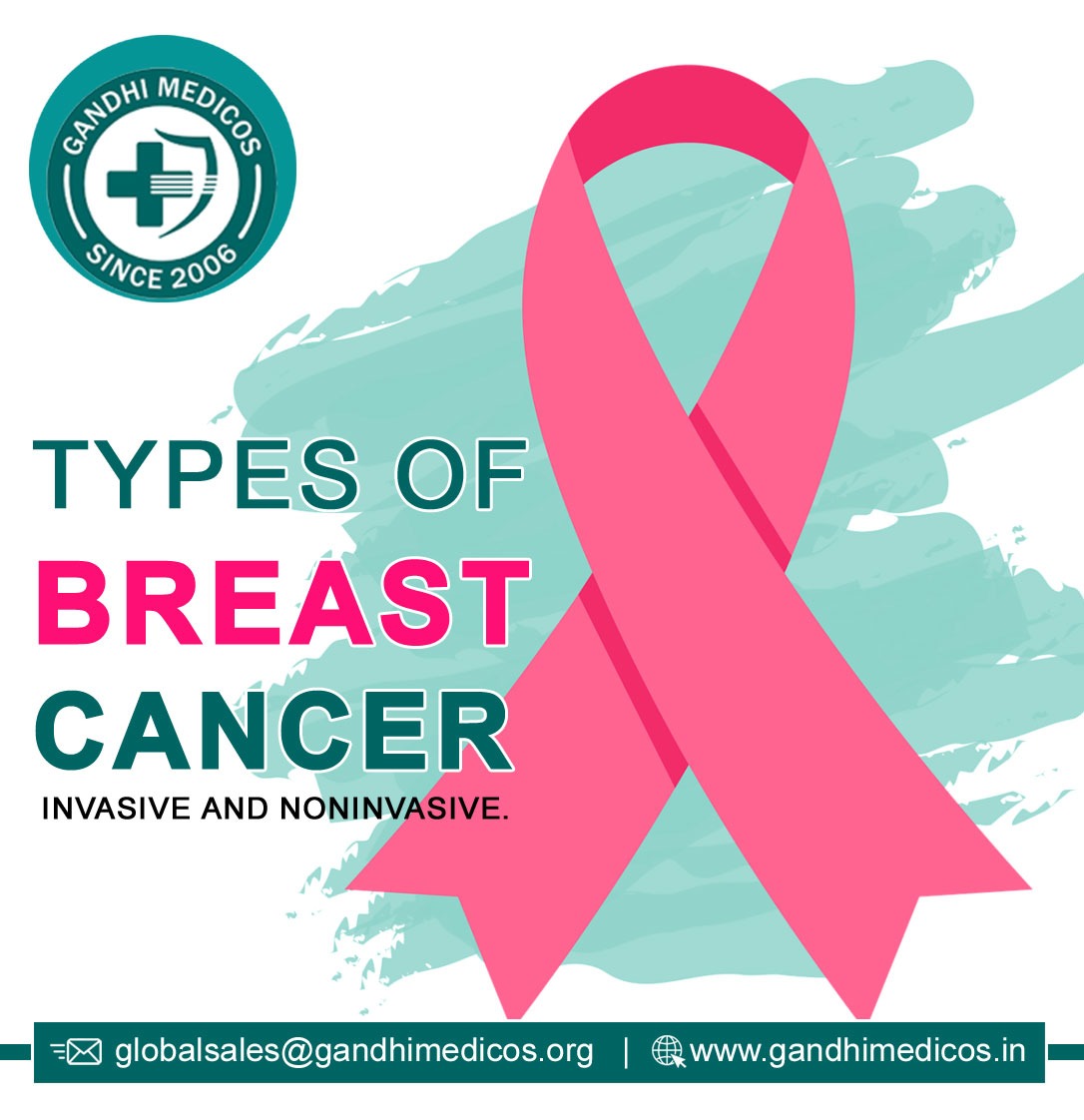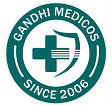Types of Breast Cancer

Table of Contents
Types of Breast Cancer
A disease that primarily affects women and causes abnormal growth of breast cells is fairly frequent in India. Commonly known as “Breast Cancer,” a range of symptoms hint towards it, including a hard mass in the breast, blood flow from the nipple, and changes in the appearance of the nipple or breast. The severity will vary depending on the cancer stage at the time of discovery. Breast cancer can start in various locations, and the type of breast cancer depends on which breast cells progress to malignancy. Although there are several different types of breast cancer, there are mostly two main categories: invasive and noninvasive.
Invasive Breast Cancer
 Most cancer cases are invasive, meaning the disease has progressed from the primary site to surrounding breast tissue, lymph nodes, or other parts of the body. In this type, the breast cancer cell breaches the protective boundaries of healthy breast tissue and disseminates to other body parts via the circulation and lymph nodes. Invasive ductal and lobular carcinomas are the two most prevalent invasive breast cancer. IDC (Invasive Ductal Carcinoma) is a cancer that forms in a milk duct (tubes that carry milk to the nipple) and develops into other parts of the breast.
Most cancer cases are invasive, meaning the disease has progressed from the primary site to surrounding breast tissue, lymph nodes, or other parts of the body. In this type, the breast cancer cell breaches the protective boundaries of healthy breast tissue and disseminates to other body parts via the circulation and lymph nodes. Invasive ductal and lobular carcinomas are the two most prevalent invasive breast cancer. IDC (Invasive Ductal Carcinoma) is a cancer that forms in a milk duct (tubes that carry milk to the nipple) and develops into other parts of the breast.
On the other hand, ILC (Invasive lobular carcinoma) is the second most prevalent type of breast cancer. It begins in lobules (where breast milk is made) before spreading into the neighboring breast tissue.
Non-Invasive Breast Cancer
Breast cancer cells that are in situ are non-invasive and stay in one area of the breast without spreading to nearby tissue, lobules, or ducts. In situ breast cancer refers to cancer that only affects the milk lobule. Ductal and lobular carcinoma are the two forms of in situ malignancy. The initial stage of ductal carcinoma is a tumor that develops there. It is also regarded as stage 0 melanoma because it remains in one location.
Technically speaking, lobular carcinoma is not a type of cancer but rather a development in the breast. To create breast milk, the breast has hundreds of tiny clusters called lobules. These lobules may develop cells that mimic cancer cells. LCIS usually stays put and doesn’t spread. However, having LCIS increases your risk of developing invasive breast cancer.
Cancer-causing Protein
The presence or absence of the growth-promoting protein HER2 (human epidermal growth factor receptor protein) in the cancer cells determines whether breast cancer is HER2-positive, or HER2-negative. High amounts of the HER2 protein make HER2-positive breast tumors more likely to grow quickly, compared to other kinds of cancer. but they can also be treated using medications that attack the HER2 protein directly. HER2-negative cancers don’t react to the same medications.
Treatment
 One medication to prevent HER-2 positive breast cancer is Herduo 250mg tablet. It contains Lapatinib, a member of the antineoplastic agent class of medications. The HER2 and epidermal growth factor receptor (EGFR) receptors, which are in charge of cell proliferation excess, are inhibited by it. This is how it prevents malignant cells from spreading and triggering downstream signaling channels.
One medication to prevent HER-2 positive breast cancer is Herduo 250mg tablet. It contains Lapatinib, a member of the antineoplastic agent class of medications. The HER2 and epidermal growth factor receptor (EGFR) receptors, which are in charge of cell proliferation excess, are inhibited by it. This is how it prevents malignant cells from spreading and triggering downstream signaling channels.
Treating advanced-stage breast cancer can be used alone or in conjunction with another drug like capecitabine or trastuzumab. It is advised that it should be consumed one hour before or after eating. Due to its numerous side effects, including diarrhea, vomiting, headaches, dark urine, and constipation, Lapatinib uses are prescribed by a doctor.
Lapatinib price
This tablet is easily available in pharmacies all over India and on online websites like needs at a price of approx. Rs 3480 per strip (30 tablets).


 Anti Cancer Drugs
Anti Cancer Drugs Hepatitis C
Hepatitis C Meds for HIV
Meds for HIV Ayurvedic Medicine
Ayurvedic Medicine Transplant Medicine
Transplant Medicine Respiratory System
Respiratory System +91-9999064250 / 9811604424 / 9811604444
+91-9999064250 / 9811604424 / 9811604444
 8(800)100-47-90
8(800)100-47-90






